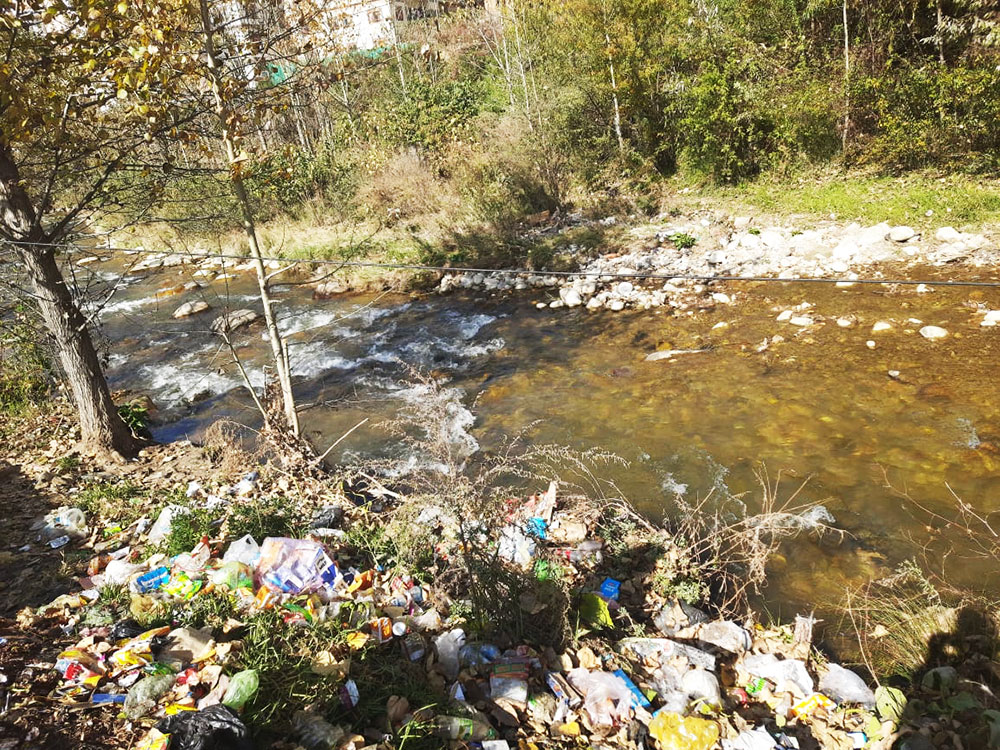Chhimi Dema
Wastewater containing pollutants from the Olakha automobile workshop in Thimphu has affected the water quality of the Olaronghchhu, posing potential health risks.
This is according to a study by Reeta Rai (PhD), a Samtse College of Education lecturer. The study found traces of heavy metals such as manganese, iron, lead, and zinc in the Olarongchhu. Similar contamination was also found in the Pachhu.
The two rivers had no Plecoptera (stoneflies), Ephemeroptera (mayflies), and Trichoptera (caddisflies) insects, which are intolerant to water pollution. Their presence in streams or still water indicates good water quality.
There were Simuliidae (black flies) and red Chironomidae (lake flies), which are associated with degraded or low-biodiversity ecosystems.
The study found concentrations of total suspended solids that affect the turbidity of water; dissolved minerals and salts; oils and grease; and copper and heavy metals discharged into the Olarongchu were greater than the permissible limits for industrial wastewater.

The study found that the wastewater from the workshop has damaged the ecological habitats, water quality, and sediments of the Olarongchhu
Reeta Rai said that wash centres adopted “very poor” environmental practices and were “seemingly” not in compliance with policies and guidelines.
Most vehicle wash centres are found ignoring or sidestepping provisions specified in the Water Act of Bhutan 2011, Waste Prevention and Management Act 2009, and the Guidelines for Vehicle Wash Facility 2020.
According to the Waste Prevention and Management Act 2009, all persons should treat and dispose of waste to reduce and eliminate harm to the environment and human health.
The Water Act of Bhutan 2011 states: “A person may not discharge any effluent directly or indirectly to any water resource unless the discharge is in compliance with the Effluent Discharge Standard.”
Effluents, says the Water Act, must be treated using “best” available technology before discharging or disposing them.
The Guidelines for Vehicle Wash Facility 2020 require a drainage system to channel wastewater into an effluent treatment plant, and the vehicle wash facility must be paved with concrete to avoid soil and groundwater contamination.
Vehicle wastewater discharge from 21 vehicle wash centres at Olakha goes straight into the Olarongchhu.
“Significant damage has already been done to the ecological habitats, water quality, and sediments of the Olarongchhu and Pachhu,” Reeta Rai said.
When the aquatic ecological habitat deteriorates, useful insects whose lifecycle is dependent on clean water and aid pollination will decline, causing ecosystem imbalance and jeopardising the country’s food security, she said.

The wastewater treatment plant that was established in 2010 is not functional today. It is still there, buried under thick undergrowth.
Vehicle wash wastewater contains pollutants such as petroleum hydrocarbon wastes (petrol, diesel, and motor oil), nutrients (phosphorus and nitrogen), heavy metals, surfactants, mud, sand, asphalt, salts, and organic matter, among others.
“Discharge of such contaminants into the water bodies degrades water quality, which in turn affects the biotic communities and impairs the use of water for household, industrial, agricultural, and recreational purposes,” Reeta Rai said.
In September 2010, a wastewater treatment plant was installed at the Olakha workshop to treat effluents. It is still there, buried under thick undergrowth.
A workshop owner said that the treatment plant was functional for only about six months after its establishment.


